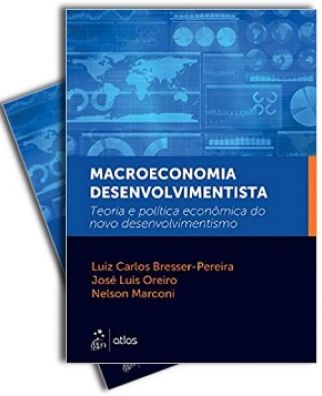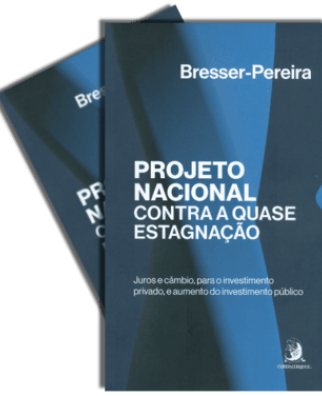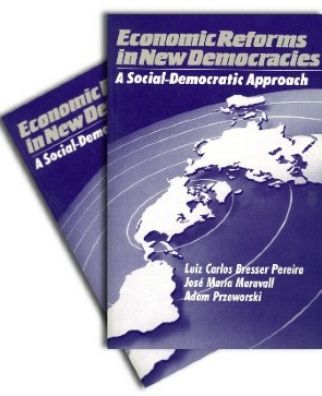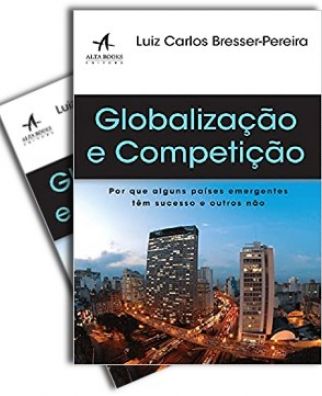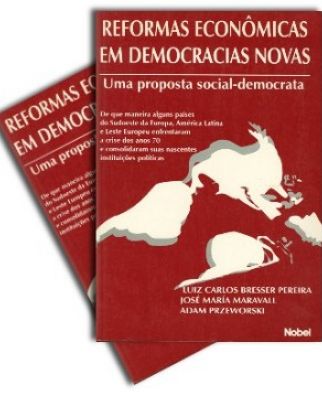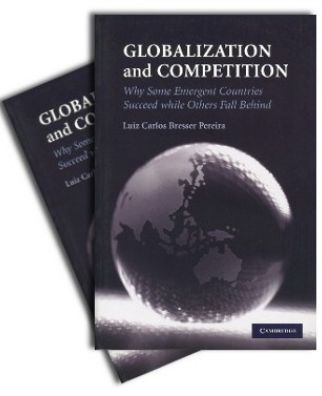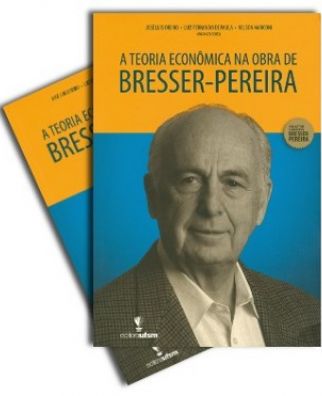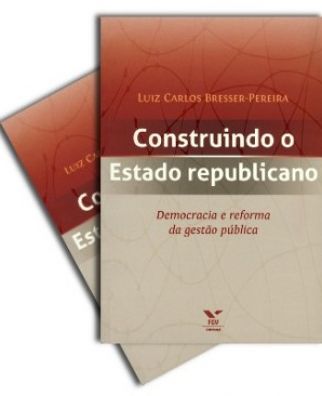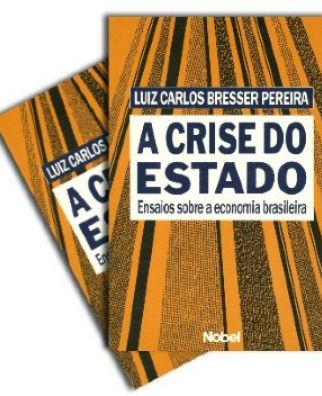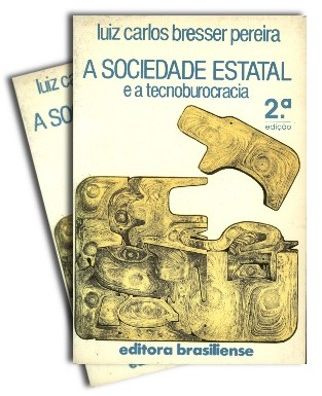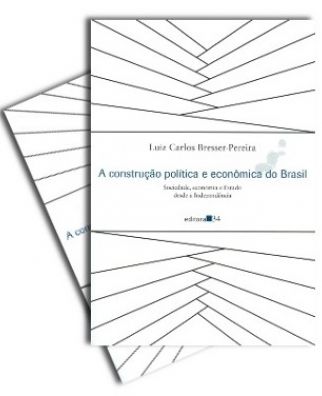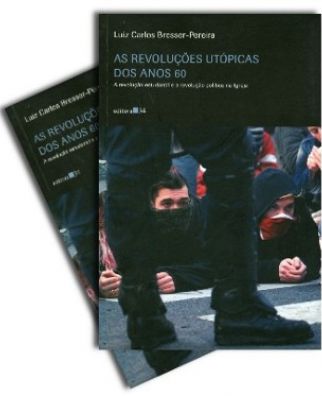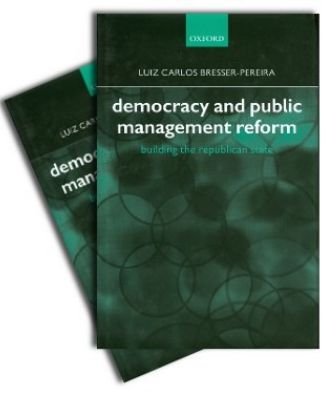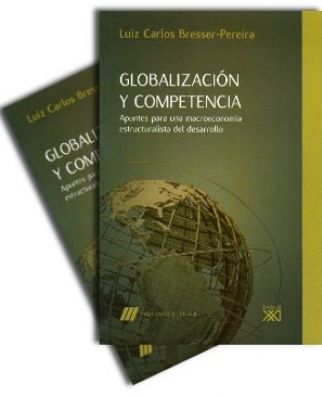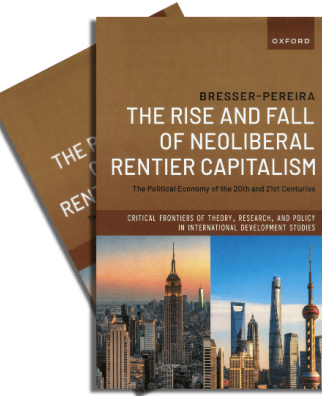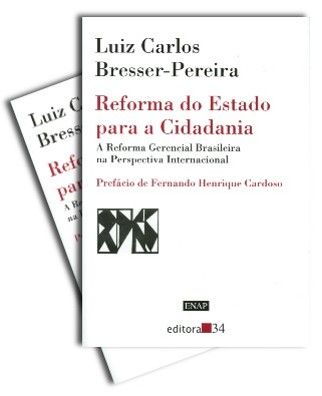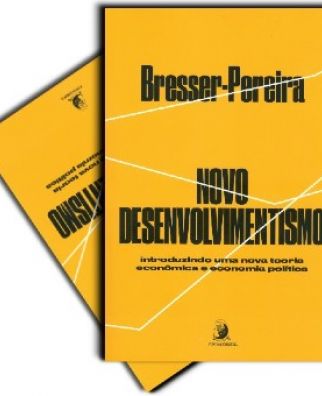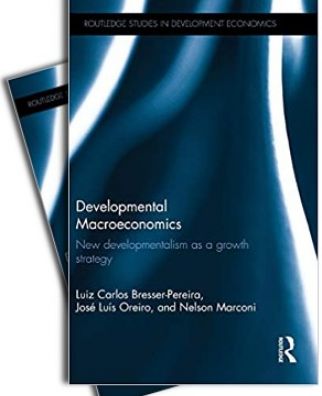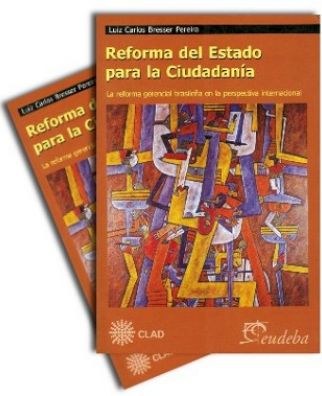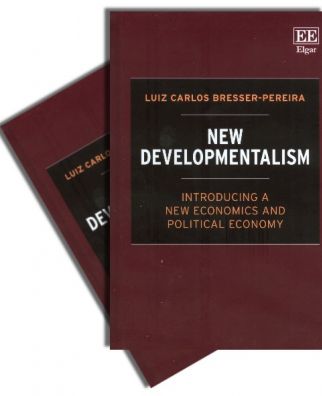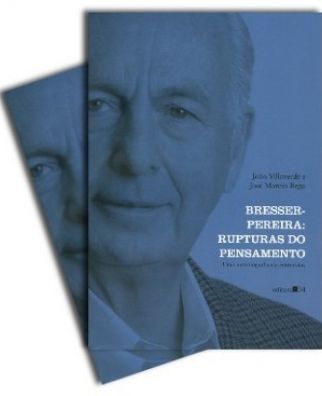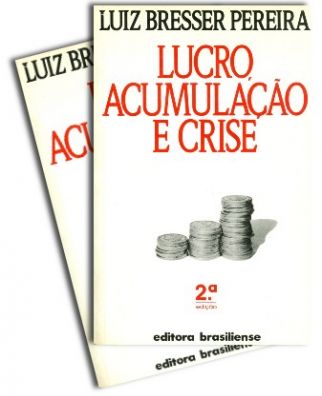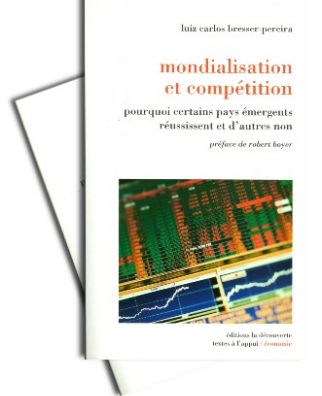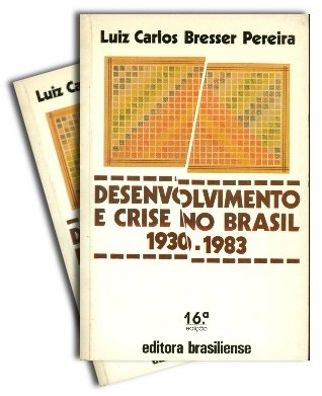2018. The phases of capitalist development having as criteria the variables of Marx's model of the falling tendency of the rate of profit. It actualizes the book Lucro, Acumulação e Crise (1986). (Paper in the Brazilian Journal of Political Economy)
ECONOMICS
INEQUALITY AND DISTRIBUTION
2013. How did inequality vary along the history of capitalism? Which were the phases, and the role of technical progress? Why inequality increased since the 1980s in rich countries? (Paper in Forum for Social Economics)
2006. Economic development defined using a historical method instead of a normative, or a hypothetic-deductive one. (Texto para Discussão 157 EESP/FGV)
José Antonio Rodrigues da Cunha (2004) "18 years of Lucro, Acumulação e Crise". Analysis of Bresser's model of growth and distribution. Paper in the Festricht of Bresser-Pereira, Em Busca do Novo. (Paper in edited book)
2002. An overview of the Brazilian economy since the 1970s. Income concentrated in the period, but only some additional reduction in wages and salaries as a consequence of a less appreciated exchange rate will permit the country to resume growth. (Paper in book edited by Ricardo Bielschowky e Ricardo Mussi, Políticas para a Retomada do Crescimento - Reflexões de Economistas Brasileiros).
1997. With Jairo Abud. The difference between the short term costs of adjusting an economy and the costs of procrastinating adjustment and reform are the net transition costs. In the limit, they determine the moment reform begins. (Paper World Development)*
1991. Based on research conducted in 1970 and repeated in 1990, this paper shows that, in 'abnormal times', when the interest rate is abnormally high, business enterprises' decisions on investment take into consideration the interest rate more attentively than they do in normal times. (Paper presented to LASA meeting)
1991. A 1990 repetition of a research on the motives to invest of major Brazilian firms originally conducted in 1970. And a comparison between the two results, showing that with the rise of the interest rate, it became more relevant in the decision process. (Research report/NPP/EAESP/FGV).
1986. The classical model of development with inverted distribution and three types of technical progress. A critique of Marx's falling tendency of the rate of profit. Chapters 3 and 4 of Lucro, Acumulação e Crise) (Paper: Revista de Economia Política)*
1986 - Book on the phases of capitalist development and the distribution of income using Marx's model of the falling tendency of the rate of profit. Atualized in the apendix with the paper, "Growth and distribution: a revised classical model". First edition, 1986; second edition, em Kindle e em pdf .
1985. The tax burden say what type state a nation has. in Brazil it is low in comparison with rich countries. It must be increased to finance the required social expenditures. (Lecture in Revista da Procuradoria Geral do Estado de S.Paulo)
1984. The 1983 devaluation of the exchange rate aggravated the concentration of income. (Article: Folha de S. Paulo, 05.06)
1982 (Article: Folha de S. Paulo, 09.05)
1981 Inequality is very much associated to wage differences. The social state and the social consumption that it provides is an efficient form of reducing inequality. Debate with Paul Singer (Lecture)
1977. An analysis of the modernizing, authoritarian and income concentrating character of the technobureaucratic-capitalist state, and of the respective model of development: "industrialized underdervelopment" (Book: Editora Brasiliense). Esgotado nas livrarias. Disponível in PDF format.
1975. The basic characteristics of growth model that prevailed during the military regime: the technobureaucratic-capitalist model of industrialized underdevelopment. In macroeconomic terms, on the supply side, it was based on the production of luxury goods; on the demand side, on the concentration of income from the middle-class upwards. Portuguese version available.
1975. The basic characteristics of growth model that prevailed during the military regime: the technobureaucratic-capitalist model of industrialized underdevelopment. In macroeconomic terms it was based on the supply side on the production of luxury goods, on the demand side, on concentration of income from the middle-class upwards. French version available(
1974. The "new development model" begins in Brazil in the late 1960s, and later I called "modelo de subdesenvolvimento industrializado". Contrarily to what Celso Furtado predicted, income concetration benefiting the middle classes was behind the resumption of growth as it made aggregate demand consistent with the production of luxury consumption goods by multinationals. Portuguese and English versions available. This paper elaborates on the 1970 article, "Dividir ou multiplicar: A distribuição da renda e a recuperação da economia brasileira".(Paper: Revista Dados)
(Paper: Desarrollo Economico)
1973. The "new development model" begins in Brazil in the late 1960s, and later I called "modelo de subdesenvolvimento industrializado". Contrarily to what Celso Furtado predicted, income concetration benefiting the middle classes was behind the resumption of growth as it made aggregate demand consistent with the production of luxury consumption goods by multinationals. Spanish and English versions available. This paper elaborates on the 1970 article, "Dividir ou multiplicar: A distribuição da renda e a recuperação da economia brasileira". (Paper: Revista Dados)
1970. It corresponds to "Dividir ou multiplicar?" (1970). It claims that the Brazilian "economic miracle" (1968-1973) signaled a new, export oriented, model of development that made consistent aggregate demand and supply of luxury goods by concentrating income from the middle class upwards. (Chapter 7 of Development and Crisis in Brazil: 1930-1983)

